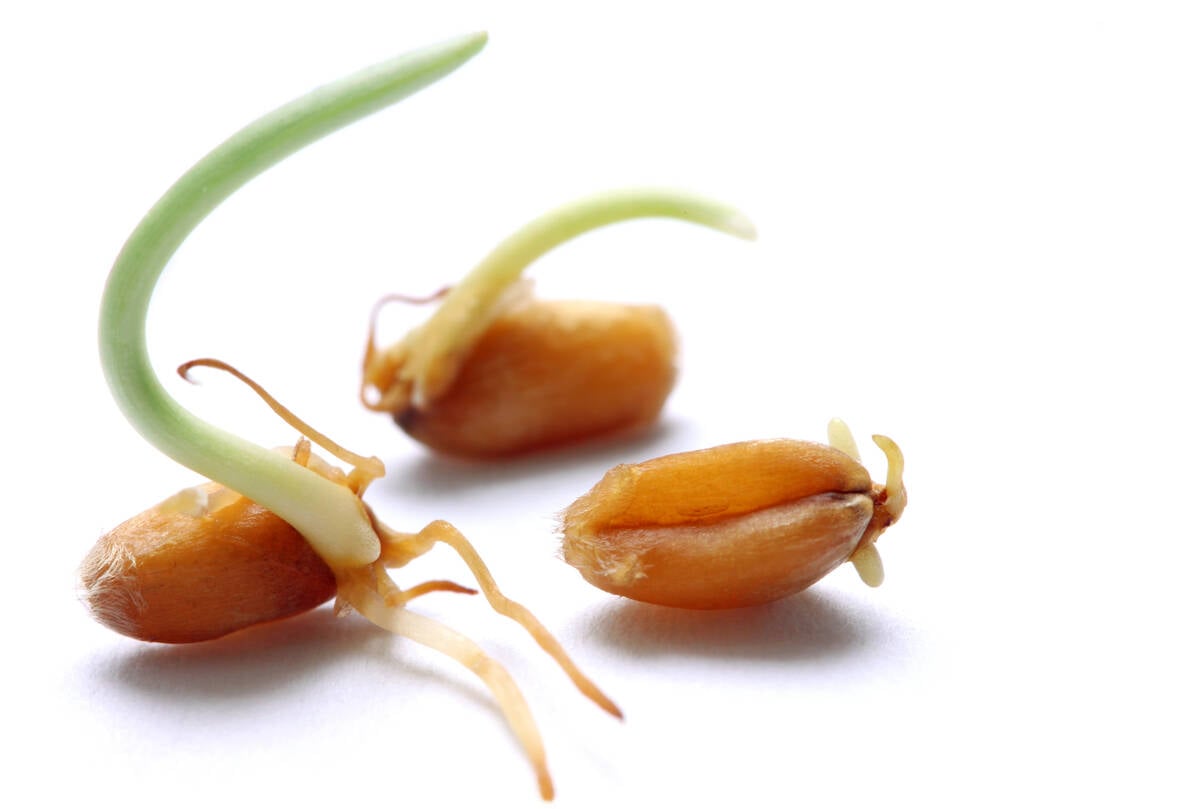National agency considered | New organization would raise funds to encourage increased potato consumption
CAMBRIDGE, Ont. — The Ontario Potato Board has a two-pronged strategy to put fresh potatoes back on the menu.
The board, together with the Canadian Potato Committee and the Canadian Horticulture Council, is looking at the feasibility of a national agency, said board chair Bob Squirrell.
Such an agency could raise $300,000 to $400,000 for potato promotion by placing a three cent-per hundredweight levy on U.S. imports, he added.
The levy is already collected on potato exports.
“We are now in the final stages of completing a feasibility study,” Squirrell said.
Read Also

Manitoba farmers fight sprouted wheat after rain
Rain in mid-September has led to wheat sprouting problems in some Manitoba farm fields.
“If the study indicates it makes sense to establish an agency, the Canadian potato industry is expected to move forward.… This could take several years to accomplish.”
However, the bigger challenge may be in convincing Canadian families to change their eating habits.
Value-chain co-ordination, improved packaging and consumer education lie at the heart of recommendations presented Dec. 4 at the potato board’s annual meeting.
George Mitges of George Mitges and Associates said potato growers, whether they’re focused on early crop or main crop potatoes, need to sit down together to find ways to better manage the entire value chain. He recommended a systems-based approach to production, packaging, distribution and marketing to reduce costs.
“This is not about your management capabilities. It is value chain management,” he said.
There’s also a need to for a strong national group, similar to organizations in the United Kingdom and the United States, which would develop effective consumer campaigns and promote potatoes’ nutritional benefits and convenience.
Nicole Marenick of Value Chain Management International presented results from a two-part survey involving more than 1,000 Ontario residents.
The survey results emphasize a need for education to address the wide knowledge gaps that exist among consumers about one of the world’s most important vegetables.
For example, potatoes are a high-glycemic food, which are associated with a spike in blood sugar levels. However, there is conflicting research about the impact on health.
Potato advocates suggest the issue overshadows the vegetable’s considerable attributes. Potatoes are exceptionally low in calories, high in fibre and a good source of vitamins and phytochemicals when they’re not eaten as french fries or chips or slathered with butter and sour cream.
Marenick said better packaging can be part of the educational component. She cited packaging used in other countries that identify potatoes by type and suggest cooking options.
For example, the Melissa’s brand in the United States promotes different potato types such as Baby Dutch Yellow Potatoes, which are described as having a “light, subtle flavour and creamy texture.” Five to six minutes of microwave cooking is the recommended preparation method.
The production of chip potatoes is holding steady in Ontario, but sales of fresh potatoes have been in sharp decline.
Huron County grower Kevin Kwarciak said he’s had to switch acres to other crops such as onions.
“Onion consumption is up 40 percent in the last 10 years and potato consumption is down 40 per cent in the last 10 years. What would you grow?” he said.
The volume of potatoes grown for the fresh market in Ontario has decreased from more than 2.2 million cwt. to less than 1.4 million cwt., which translates into a $17 million loss in farmgates sales.














